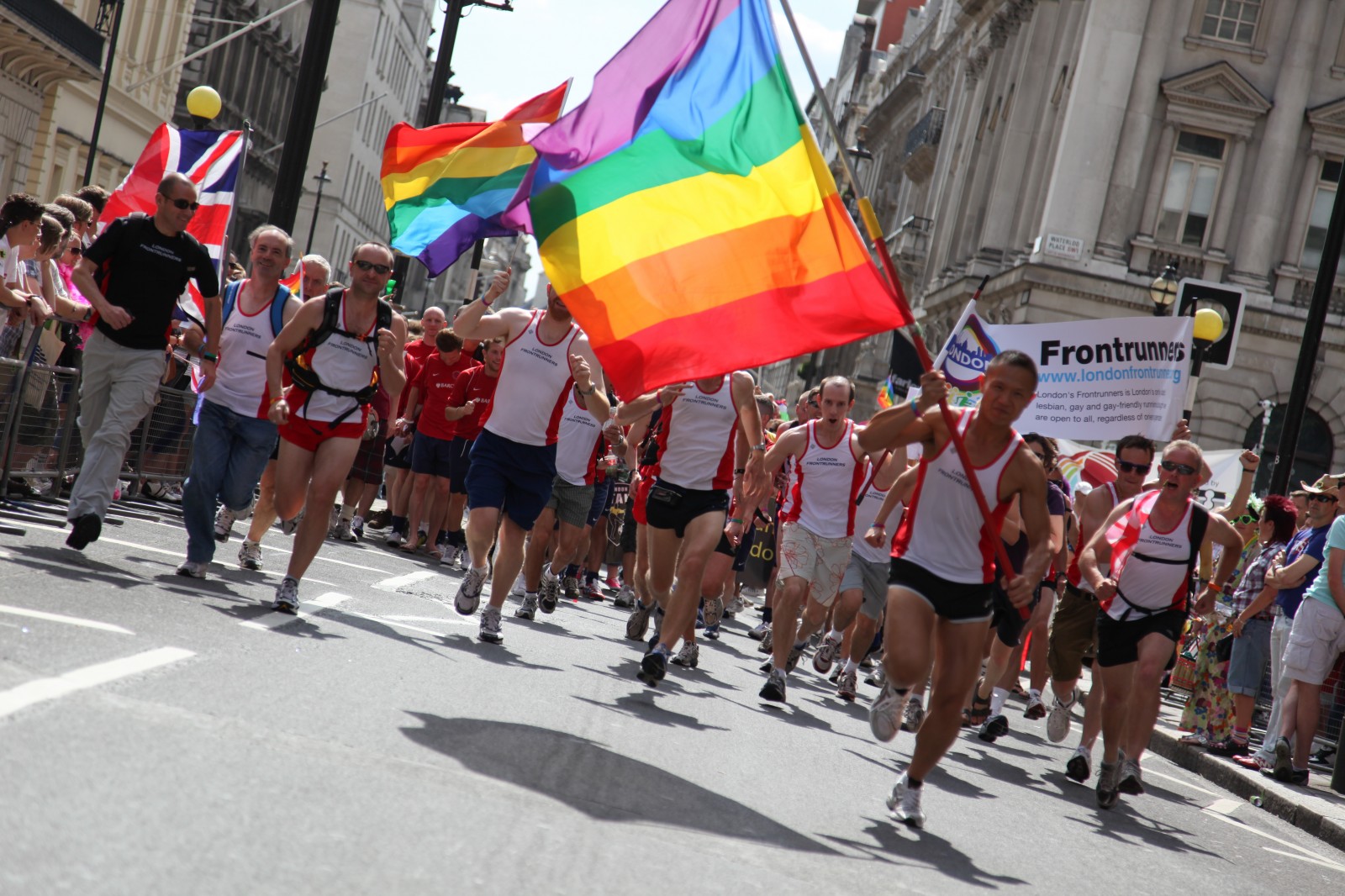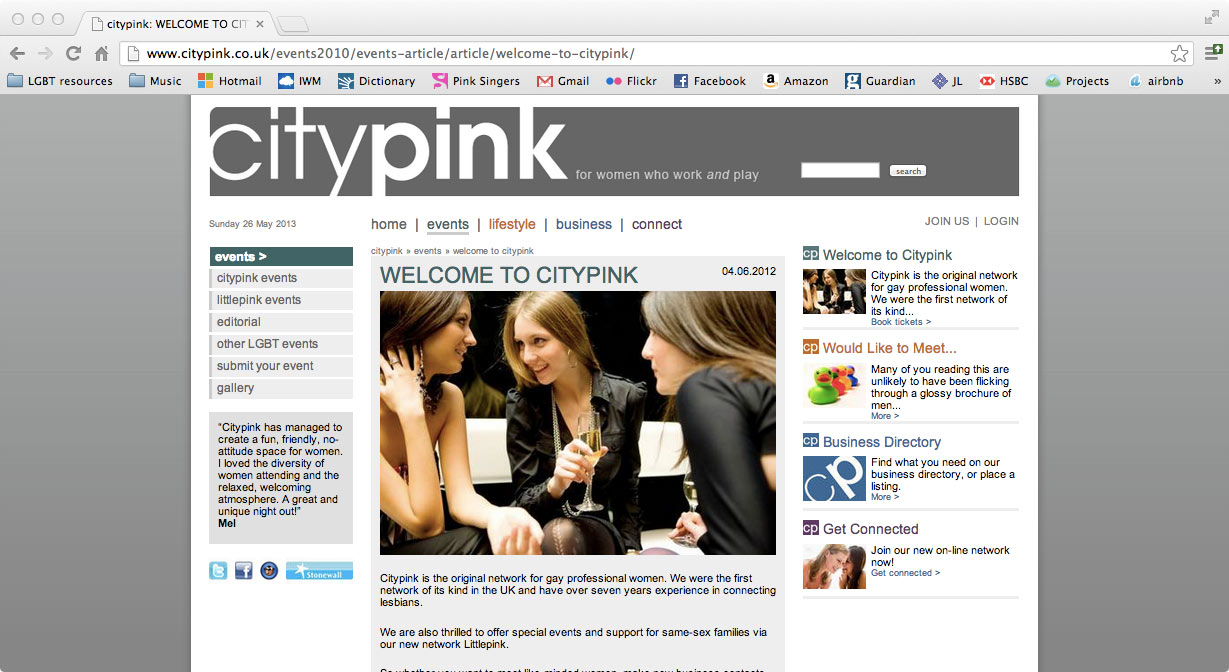As legal rights have been secured and attitudes have been challenged and changed, different kinds of LGBT social spaces – like choirs – have emerged.
1983: Pink Singers founded
Establishing a homosexual choir in 1983 was a political act.
The year saw the AIDS pandemic take a grip (the acronym had been coined only months previously). The Thatcher government with its anti-gay rhetoric, was consolidated in a landslide election victory. In London, Peter Tatchell faced a hostile, homophobic campaign standing for the supposedly safe Labour seat of Bermondsey.
Lesbians and gays were not very visible; transgender people even less so. Most portrayals were negative. The sign-up sheet from the first choir rehearsal at Oval House Theatre shows the strong awareness of the significance of joining: some people simply wrote ‘political’ in the voice column.
The choir was among a new wave of groups which combined a hobby with a political purpose. However, the most basic function the group served – and continues to serve today – is that it provides a social space to meet other LGBT people.
The diary of the choir’s co-founder and first Musical Director, cabaret artist Mark Bunyan recorded his thoughts after week one :
‘The rehearsal for the gay choir survived both my incompetence and the potential splits of cultural/political and male/female but we’ll see how next week goes.’
Entering a new world
Bars were essential to gay life: where else would you meet someone like you?
The Gateways club on the King’s Road ran as a private, women-only members bar from the 1960s to the 1980s, when newer, more modern venues supplanted it.
It was run by a husband and wife team, Gina and Ted Ware along with a former (female) member of the US Air Force, known as Smithy.
Political spaces
In the 1970s and 1980s, lesbians often met through activities associated with the women’s and peace movements.

An example of this is the women’s peace camps at Greenham Common. Set up to protest against the stationing of nuclear cruise missiles, they soon also hosted a strong and visible lesbian community. They gave lesbians a new visibility in the mainstream media and so became a place to which lesbians, especially young women just coming out, were attracted.
Two choir members (pictured today) spent time at Greenham, although they did not know each other – Sally-Anne, the owner of these badges, and Gerry, a former Thames Valley policeman!
Pride marches
The Pink Singers’ first public performance was at London Pride.
Pride marches were started by the LGBT community to celebrate our existence, to campaign for political rights and to make our presence in the communities we live more visible.
Because the Stonewall Riots on 28 June 1969 are seen by many as the beginning of the modern LGBT civil rights movement, London Pride is held on the Saturday closest to the anniversary of the riots. This photo shows the Pink Singers marching for World Pride in 2012, when it was hosted in London.
Club culture
For many, the gay community is strongly associated with clubbing.
The hedonistic club scene of the late 1980s and 1990s provided many with their first experience of different definitions of sexuality.
The Pink Singers even did the odd gig in the club Heaven, as former musical director, Robert Hugill’s scrapbooks record, somewhat unenthusiastically.
Sexual spaces
The gay and lesbian bar and club scenes demonstrate a diverse range of attitudes towards sex.
While the lesbian scene has generally – though by no means exclusively – focused on providing opportunities to meet others, the gay scene has a stronger emphasis on casual sex.
Before the crime of gross indecency was removed from law in 2003, most opportunities for casual sex were found at known cruising spots and a handful of underground venues, which were often raided by police. In recent years, the sauna and fetish club scene has grown in popularity.
Hobby groups
The Pink Singers are a fabulous example of an LGBT social group.
But for those less musically inclined, there are lots of alternatives. The fleet of foot can join the London Frontrunners and lead the way in the annual Pride run. The more sedentary can join an ever-growing list of arts groups, knitting groups, hiking groups, professional groups and so on.
The gay press
For many – especially those living in places without gay bars – magazines provided a first exposure to the LGBT community.
The internet is increasingly supplanting glossy publications, but several still survive, albeit in a changed form. When it began, the choir’s activities were heavily reported in Gay News. Today’s publications have a commercial focus and tend to concentrate on celebrities, lifestyle and services. Community news has largely moved to the web.
Meeting online
The internet enables people with minority identities to find others.
Sites aimed specifically at the LGBT community range from those promoting fleeting encounters like Grindr and Gaydar to online communities like the lesbian site Gingerbeer and listings sites like Gay to Z. Many of our members came to the choir through the web and some met partners online.





